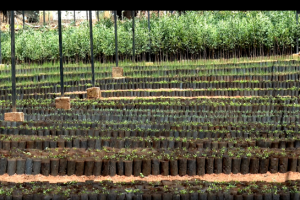
Migration is the movement of people from one location to another, usually across boundaries. It can happen for a variety of causes, be voluntary or coerced, and affect individuals or groups. According to data, migration is classed into four types: internal, international, forced, and voluntary. Internal migration refers to movement within a country, such as rural-to-urban migration, in which individuals relocate to cities in search of better prospects, whereas international migration refers to travel beyond national borders for employment, education, family reunification, or asylum.
Forced migration is generally caused by conflict, persecution, or natural catastrophes, whereas voluntary migration happens when people choose to relocate for economic reasons, such as seeking a job or better living conditions.
Economic concerns, such as the desire for better and higher living standards, may also be driving migration. Migration can be motivated by social motivations such as the desire to reunite families, educational opportunities, and social networks.
Political concerns such as violence, persecution, and human rights violations might lead people to depart their home nations. Cultural reasons that drive people to migrate in order to escape cultural tyranny or to find a better environment for their beliefs and practices.
Several researchers in the field recognized that migration is a complicated phenomenon driven by a range of causes, with substantial consequences for individuals and nations. Understanding the dynamics of migration is critical for designing successful policies that promote migrants’ well-being while tackling the obstacles that come with their movement.
The impacts of climate change, including desertification, extreme weather events (such as hurricanes, floods, and droughts), rising sea levels, and other environmental changes that render areas uninhabitable or less suitable for human habitation, were the main causes of climate migration, which is the displacement of communities and the driving force behind migration.
Furthermore, climate migration can be caused by extreme weather, such as increased frequency and intensity of storms, floods, and wildfires, which can devastate homes and livelihoods. Rising sea levels render people living in coastal towns vulnerable and cause displacement.
More severely, drought and water scarcity are also factors that drive people to migrate. Long-term droughts, in particular, can render agricultural land worthless, pushing people to relocate in pursuit of better conditions.
Moreover, it exposes them to food insecurity. Climate change has the potential to disrupt food production, resulting in shortages and migration.
Hence, climate migration is becoming a more pressing issue as the effects of climate change worsen. Addressing the causes and assisting those affected would necessitate collaborative actions at the local, national, and global levels.
If climate change impacts individuals and causes displacement in various communities around the world, it is crucial to consider how it affects East Africa, particularly the Intergovernmental Authority on Development (IGAD) region. What is Ethiopia’s role in mitigating regional climate change?
The Intergovernmental Authority on Development (IGAD) Executive Secretary Workneh Gebeyehu (PhD) once told local media that the region is severely afflicted by recurring drought and is vulnerable to the detrimental effects of climate change.
Indeed, in the Intergovernmental Authority on Development (IGAD) region, climate migration is being caused by a combination of socioeconomic pressures, political instability, and climatic change. Climate change has a significant impact on countries like Djibouti, Eritrea, Ethiopia, Kenya, Somalia, South Sudan, Sudan, and Uganda, and it is a major migratory concern.
The IGAD region is vulnerable to droughts, which have become more severe as a result of climate change. Prolonged dry spells cause water scarcity, which has an impact on agriculture and cattle, both of which are critical to many communities’ survival.
In contrast, some locations endure extreme rainfall and flooding, displacing residents and ruining infrastructure. Weather patterns are unpredictable, complicating agricultural planning and increasing the risk of food poverty. Climate change exacerbates resource scarcity (water, arable land), and competition for these resources can lead to conflict, forcing people to move in quest of better living conditions.
As a result, the detrimental effects of climate migration necessitate long-term regional systems and remedies. It is especially important to develop adaptation methods and mitigation activities to improve water management, which will help communities become more resilient to climate impacts.
In this scenario, Ethiopia can serve as an excellent example because the country has made numerous efforts to mitigate climate change through the Green Legacy initiative.
According to Workneh (PhD), the IGAD region’s countries have been heavily impacted by the effects of climate change in recent years. As a result, Ethiopia’s efforts to tackle climate change through the Green Legacy Initiative set an example for the rest of East Africa.
Ethiopia is one of the IGAD region countries that has been doing exemplary work applying the green Legacy initiatives via various measures to combat the negative impacts of climate change, he indicated.
The African Migration Observatory (AMO) Director Ambassador Dr. Namira Negm, in her part said that Ethiopians’ attempts to combat climate change through the Green Legacy Initiative can play an important role in assisting people affected by its harmful effects in the IGAD region.
She added that climate migration is becoming a more pressing issue as the effects of climate change worsen. Addressing the causes and assisting those affected would necessitate collaborative actions at the local, national, and global levels.
Climate change is currently forcing people in the IGAD region to leave their homes. Floods, droughts, desertification, and other environmental changes that render areas inhospitable or unsuitable for human habitation. Moreover, recurring droughts, combined with conflict and war in the IGAD region, have caused Ethiopia to host a large number of migrants.
As a result, Ethiopia is not only hosting migrants from surrounding countries, but it is also playing an important role in reducing the negative impacts of climate change through the Green Legacy Initiative and other methods. She also stated that strengthening Ethiopia’s green legacy initiative and climate change mitigation measures are critical not only in the country but also throughout the region.
Moreover, the country’s role in mobilizing human and material resources to execute greenery projects enabled the country to plant 40 billion seedlings out of a planned 50 billion by 2026. This demonstrates the country’s attempts to achieve its greenery programs with internal resources and capacity.
Climate migration in the IGAD region is indeed a multifaceted issue that requires comprehensive strategies addressing both environmental challenges and socio-economic factors.
Therefore, collaboration with Ethiopia’s Green Legacy Initiative is essential to develop effective climate change responses that protect vulnerable populations and reduces climate migration while promoting sustainable development in the region.
BY EPHREM ANDARGCHEW
THE ETHIOPIAN HERALD WEDNESDAY 5 MARCH 2025





